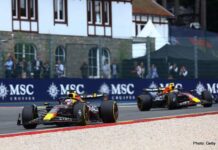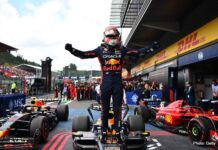With today being the anniversary of the FIA and Ferrari reaching an agreement following their power-unit investigation, it’s time to measure Ferrari’s performance and understand where the Scuderia sit.
It’s safe to say Ferrari’s 2020 season was disappointing. Looking back it’s difficult to process how their car which came to form during the 2017 season and made impressive progress through to the end of the 2019 season, managed to find itself as deep in the field as it did. It only seems like yesterday that we had been blessed with an instant classic performance like the Monza 2019 Grand Prix where Charles Leclerc miraculously held the advances of the Mercedes of Lewis Hamilton only to then spend the 2020 season fighting his car ahead of his rivals.
While a lot has been made of the FIA agreement, from threats of court action, endless season-long discussion, accusations, opinions, one thing that hasn’t been done is to put their performance into perspective. So let’s take a shot at it.
On the basis that the cars run in their most raw form during qualifying in the hybrid era, I’ve gone ahead and pulled qualifying data for both the Ferrari and Mercedes from 2014 to 2020 looking specifically for the fastest lap delivered in each qualifying session per each manufacturer’s car. With the heavily revised schedule due to covid-19 in 2020, the sample size of this comparison is limited to the nine circuits which are consistent since 2014:
- Red Bull Ring, Austria
- Hungaroring, Hungary
- Silverstone, Great Britain
- Catalunya, Spain
- Spa-Francorchamps, Belguim
- Monza, Italy
- Sochi Autodrom, Russia
- Bahrain International, Bahrain
- Yas Marina, Abu Dhabi
*4 outlier times have been excluded: 2014 British GP (Mercedes was faster), 2014 Belgium GP (M), 2017 Italian GP (M) and the 2018 Hungarian GP (F).
The numbers paint a painful picture. Ferrari qualified this year at Spa and Russia slower than their 2017 qualifying lap time, and only a tenth faster than 2017 at Bahrain. Austria, Spain, Monza and Abu Dhabi qualifying times were all slower than their 2018 lap times as well. Alternatively, Mercedes had a couple losses as well, they were half a second slower than their own 2018 Abu Dhabi time after having supposedly turned down its power unit at the season finale, and were two tenths slower than their 2019 Spanish GP qualifying time while showing genuine progress everywhere else. The 2020 Ferrari SF1000 might have given the 2017 Mercedes AMG F1 W08 EQ Power+ a good strong fight four years ago, but not in 2020.
It gets worse.
Since 2014, Ferrari have been playing catch up to Mercedes. Among the circuits visited this year Ferrari was faster than Mercedes twice in 2017, three times in 2018 and five times in 2019 on Saturday with Ferrari eventually closing the average qualifying delta with Mercedes to 0.006s/lap in 2019. Excluding the wet Austrian GP session this year, Ferrari on average qualified 1.381s/lap behind Mercedes, that’s over a tenth worse than the 2014 qualifying lap time delta.
So while this year’s SF 1000 might be comparable to the 2017 SF70H, when you take the progress Mercedes have made this year, Ferrari lost the equivalent of five years’ worth of development in one winter.
Mattia Binotto recently suggested that Ferrari will not close the gap to the front this year. You can take that quote to the bank.














































